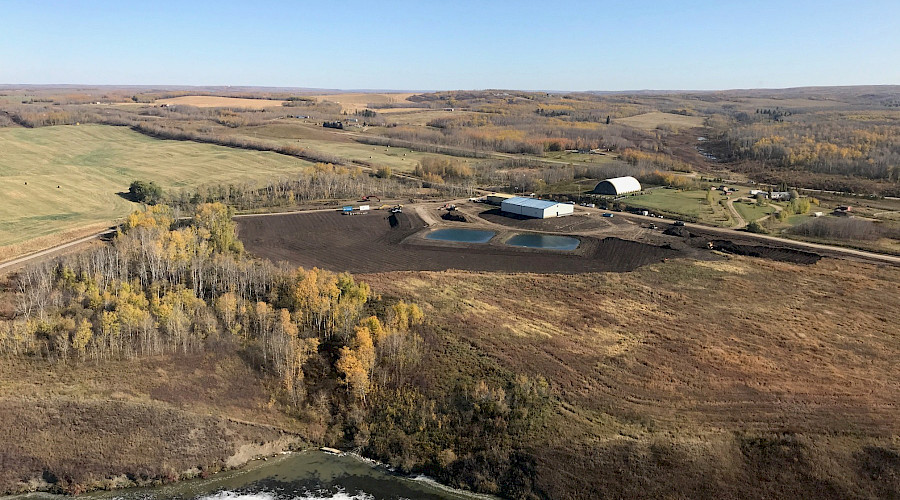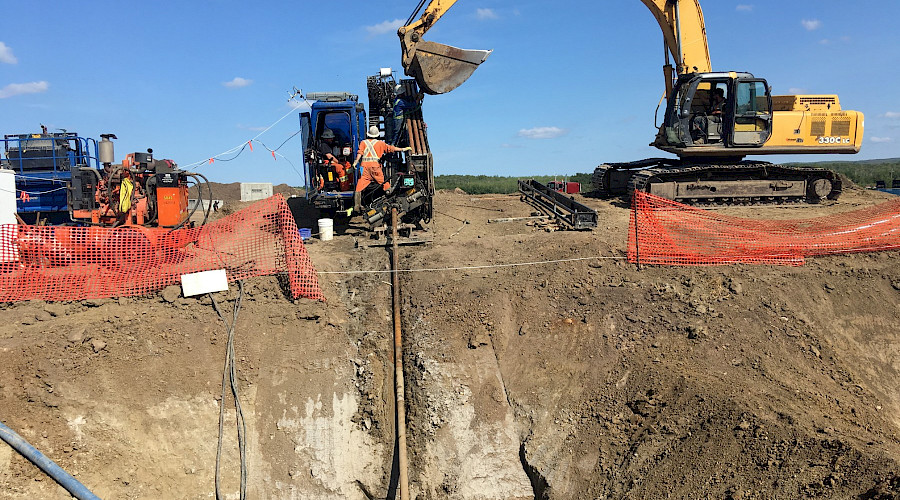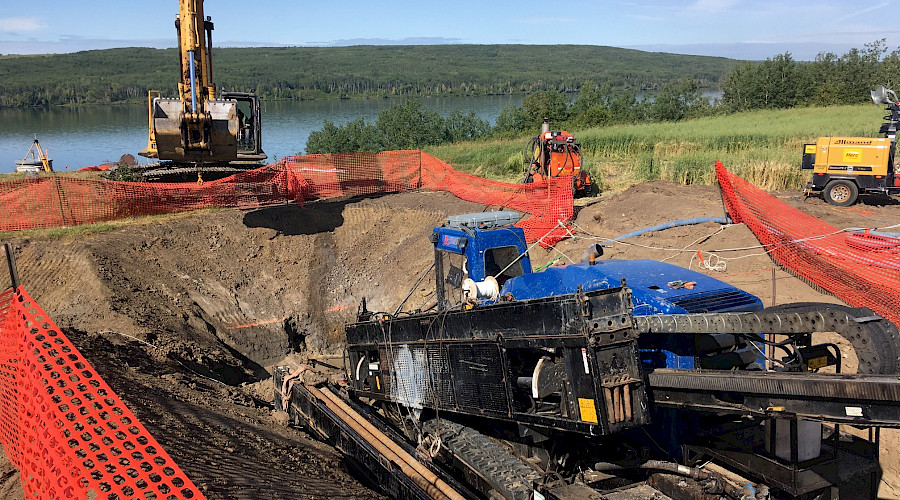The work for this project requires a new raw water intake, treatment plant and decommissioning work in the existing plant. The Kehewin First Nation has suffered through one of longest boil water advisories in the country and this project will greatly serve the community. Plus, with the help of our social procurement practises, we'll be able to provide lasting service to the band.
Our team was tasked with completing the installation of two new water intakes into the nearby Kehewin Lake. The new intakes consisted of two separate, approximate 180 meter long, horizontal directional drill shots through very hard clay shale and a 30 meter elevation difference between entry and exit points.
Due to the aquatic species and environmental protection guidelines, the work had to be completed in late summer/early fall - typically, it is preferred for HDD work to be completed in frozen/winter conditions. This posed interesting challenges with the potential for frac-outs, constant environmental monitoring being required and strict site protocols and event responses. This also meant that the 200m x 400mm HDPE casings needed to be floated onto the lake, safely anchored and controlled by boats and partially sunk in order to be pulled back up through the drilling hole.
An innovative risk mitigation plan utilized for the work was using a helicopter to roughly place the 1,500 pounds of concrete anchor blocks into the lake that would be fastened to the intake screens on the end of the casings. It saved the project not only costs but schedule as the team was up against a firm in-lake activity completion date.
A collaborative construction approach made for an ultimately successful drilling operation and made the project one step closer to supplying the Kehewin Cree Nation residents with a sufficient water supply.
Our goal with this project is also to provide locals with training on how to maintain and operate treatment facilities so that their communities never have to go without clean water again.



